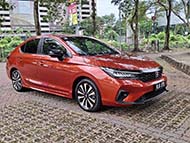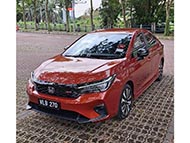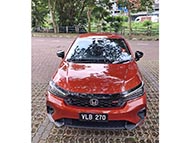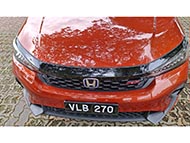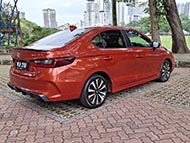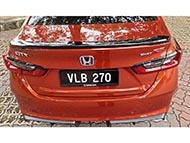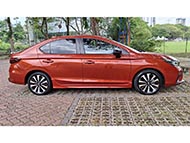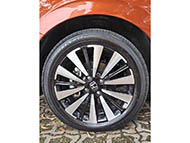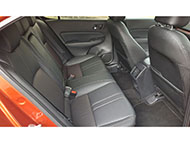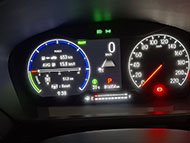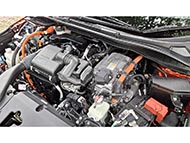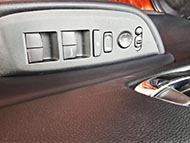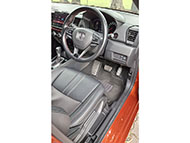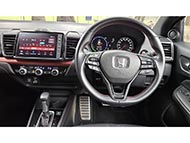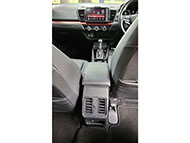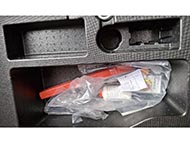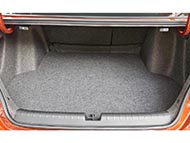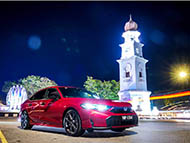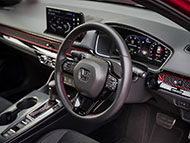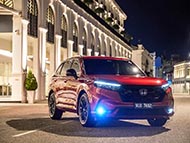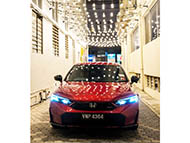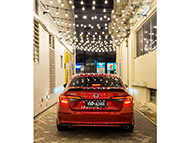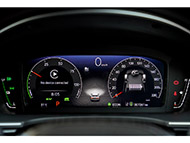By Lee Pang Seng
CAR colours are very subjective, more so than the vehicle body design, and each car brand usually has five or more for its customers to choose from. For more than a decade, metallic body colours are the preferred alternatives over solid hues but there are two from the latter that stood the test of time.
This is white and black, and white is found in a recent survey to be a favourite choice among Malaysia vehicle owners. Black goes further down the rank and would be ranked even lower if not for the high volume of reconditioned Toyota Alphard MPVs (multipurpose vehicles), which come mainly with two colour options – white and black.
Our personal favourite is silver that we find pleasing on the eye and holds its own with a quiet but sublime stance in road presence. We also like the fact that the silver sheen does a good job of ‘hiding’ dirt and dust stains, although we still send our vehicles (both silver) for a wash almost weekly.
Nevertheless, some car brands throw in striking or unusual metallic colour options for those who might want to rise above the normal alternatives on offer. In the recent scenario, the colour orange comes to mind and there is quite a variety of this hue being offered by the respective car brands. It goes from bright and striking tones to deeper hues that border on being midrange red.
Honda Malaysia is among the latest to hop onto the orange bandwagon earlier this year for its City range. It has chosen a deeper orange that is called Phoenix Orange Pearl and which is available at an additional RM400. That adds an exclusivity to having an Orange City besides standing out readily from the crowd.
That was a good reason as any to have a go again at the fifth-generation City, the facelift model of which was introduced in August 2023. We had the Phoenix Orange Pearl City e:HEV RS for a weekend. Although our re-acquaintance was with the top model in the range, the optional orange colour is available for all the variants in the group. Just pay the additional price and you could be driving an Orange City of any model variant.
The facelift City was introduced with five variants that included a new RS variant, which meant there are two RS variants available – the flagship e:HEV RS and new Petrol RS – to pander a wider market clientele. The price difference between these two RS models was a bit too wide at RM20,000, which might limit its appeal somewhat in this segment where customers are more careful with their money. The e;HEV RS carries a price of RM111,900 on the road without insurance.
Nevertheless, the RS models come with its distinct updates in the new design Honeycomb front grille, lower grille apron, rear diffuser, side skirting and refreshed RS badges. They also feature new 16-inch Dual Tone alloy wheels. Generally, the City facelift models come with new front and rear bumpers. However, the RS variants are slightly longer than the other models with their refreshed bumper design measuring at 4589mm in body length against 4580mm for the S, E and V variants.
Except for the S variant, the other City models feature upgraded items like the eight speaker sound system, new interface for display audio, enhanced Multi-Angle Rear View Camera and new Rear USB Port (Type C). The City facelift launch in 2023 also highlighted the fact that more than 423,000 City range was sold since it was introduced in 2002 (we were the owner of the first model back then when it came with a 1.3-litre engine).
Honda Malaysia also emphasised the fact that when the fifth-generation City was introduced here in 2020, the country was the first in the world to launch the e:HEV RS variant. About 10 per cent of current City sales are said to comprise this flagship hybrid model.
As our previous drives in the City e:HEV RS – both sedan and Hatchback – were on long distance media experiences, we figured it would be good to ‘live’ with this variant for more than just a day. The weekend outing gave us a better understanding of the Honda hybrid system; after all, HEV stands for Hybrid Electric Vehicle.
Hybrid car ownership allows one to enjoy electric power driving without the range anxiety, which is a bit overblown with the progressive installation of charging stations in Malaysia. The Honda e:HEV system comprises the ICE (internal combustion engine), a 1kWh battery located at the rear and two electric motors; one serves as a generator and the other is the drive motor.
The hybrid system in the City features a 1.5-litre Atkinson engine unlike that in the Civic and CR-V, which come with 2.0-litre power units. The electric motor is also less powerful in output than that in the Civic and CR-V as the City is a lighter vehicle in kerb weight (1250kg for the City e:HEV RS).
The Honda e:HEV system operates in the same way as the 2.0-litre system with the battery supplying electricity during initial acceleration and the engine to charge it via the generator motor when its electric level is low. Once the battery is fully charged, the generator motor links up with the drive motor to supply electric power that the engine is charging up.
As it were, the 1.5-litre (1498cc) Atkinson Cycle engine delivers decent power with 72kW (98PS) at 5600-6400rpm and 127Nm from 4500-5000rpm. The electric drive motor has more to offer with 80kW (109PS) and 253Nm. Power goes to the front wheels via an e-CVT (electric continuous variable transmission).
With strong electric power during initial acceleration, the City e:HEV RS is clearly a faster car in sprinting from 0 to 100km/h at 9.9 seconds (10.2 to 10.4 for the City ICE variants). It loses out on top speed as that is not its forte at 177km/h (195-196km/h). Another strong point is its excellent fuel consumption of 3.6 L/100km (27.8km/l) against 5.6 L/100km (17.8km/l). That’s 10 kilometres more per litre of petrol.
Well, our weekend Orange City experience certainly wasn’t lacking in the brisk take-offs from the traffic lights. Seeing the rather slow drop of the fuel bar indicator on the instrument panel despite the robust urban driving showed how economical it is running on electric power. Honda says the e:HEV system switches among three driving modes – EV Drive, Hybrid Drive and Engine Drive.
The urban drive experience gave us a better insight into the system than our previous mainly highway outings. There is no speedometer on the instrument panel but a power use indicator and the recharging phase. The good initial pace made it less of a need to step the accelerator hard to get moving fast, which in turn wouldn’t drain the battery too quickly or activate the engine too often to charge.
Flooring the accelerator hard to overtake a slower vehicle would have the engine driving the front wheels, via a lock-up clutch. Doing that too often would also mean burning up too much petrol unnecessarily. Given prudent driving, the 40-plus litres fuel tank should provide for at least two weeks of urban motoring in between petrol top-ups.
And like a typical hybrid car that has battery regeneration, there are Deceleration Selector paddles that allowed us to choose the level of battery deceleration. At the higher deceleration mode (using the brakes as usual), we could slow the car down effectively without stepping on the brake pedal. This is because the battery power regeneration system is strong by working harder on the brakes, slowing the car down at the same time. You need to familiarise yourself with this deceleration system before making practical use of it; you might even enjoy it.
We also have a better overall experience of its ride comfort in urban areas, what with the speedbumps, potholes, bumps and rumble strips encountered daily. The City has a MacPherson strut front suspension and multi-link rear, and the City e:HEV RS comes fitted with Toyo Proxes R57 tyres of the size 185/55 R16.
The daily drives over the varied road terrain were done in reasonably good ride comfort. The harshness of the road impacts was nicely damped and even our rear passengers complimented the City for its comfortable ride. The City has a rather low ground clearance and we had to be careful going over some high speedbumps to avoid scraping the body underside. Going over the speedbumps at an angle helped too.
Locating the battery below the boot floor reduced space capacity to 410 litres against 519 for the other City variants. Nevertheless, the boot looks big enough to accommodate holiday luggage for a family of four or more. Besides, the 60:40 split folding rear seatrests could be folded down if you need room to carry big items. Also, as a result of the battery location, there is no spare tyre but a tyre repair kit.
For a car that’s 4580mm long and has a wheelbase of 2600mm, interior room is spacious for its class. Four adults should travel in good comfort, given that scenario. The combination leather upholstery standard to the City e:HEV RS adds a touch of class as well. It has a full range of passive and active safety features and one of our favourite items is the side mirror camera view on the centre multi-info display when turning left.
The City e:HEV RS is definitely the variant you are looking for if good fuel mileage is your priority and it scores strong points in other areas to make it a persuasive option. And with the body colour alternative of Phoenix Orange Pearl, you could stand out from the crowd as well.
